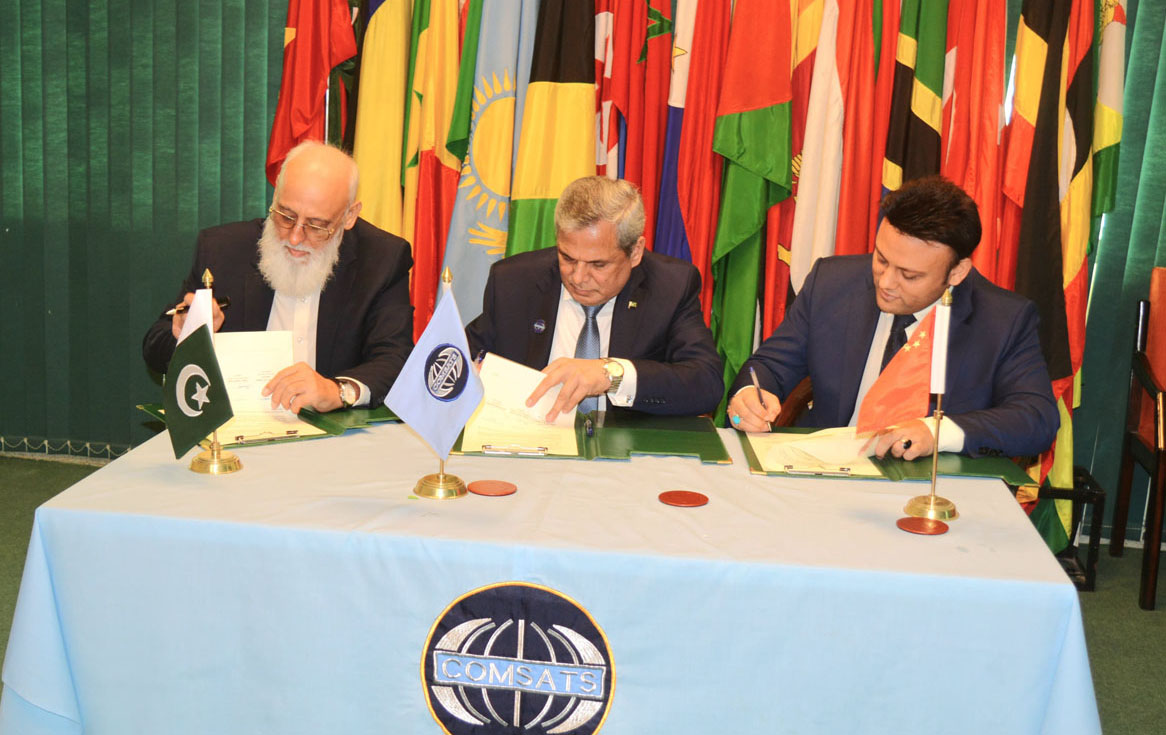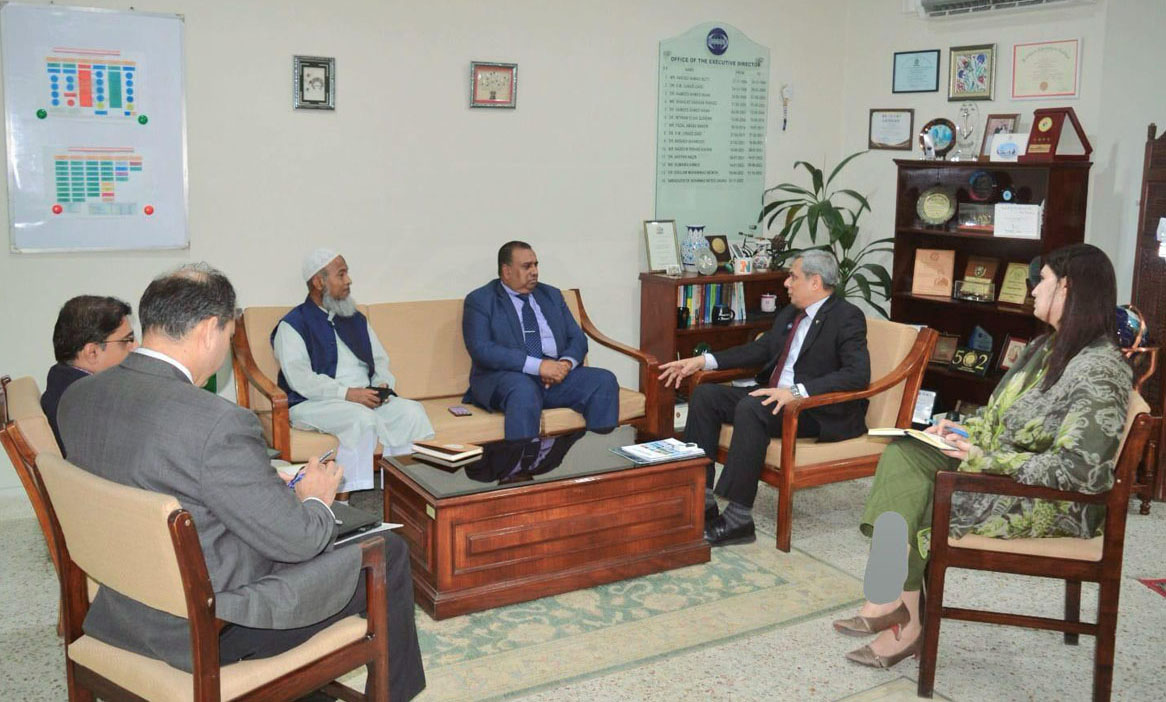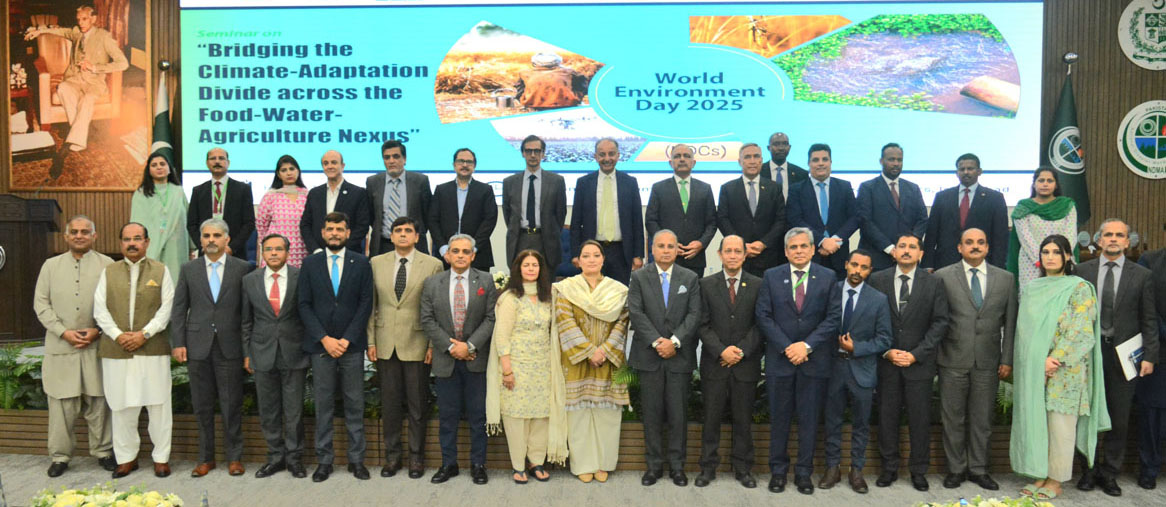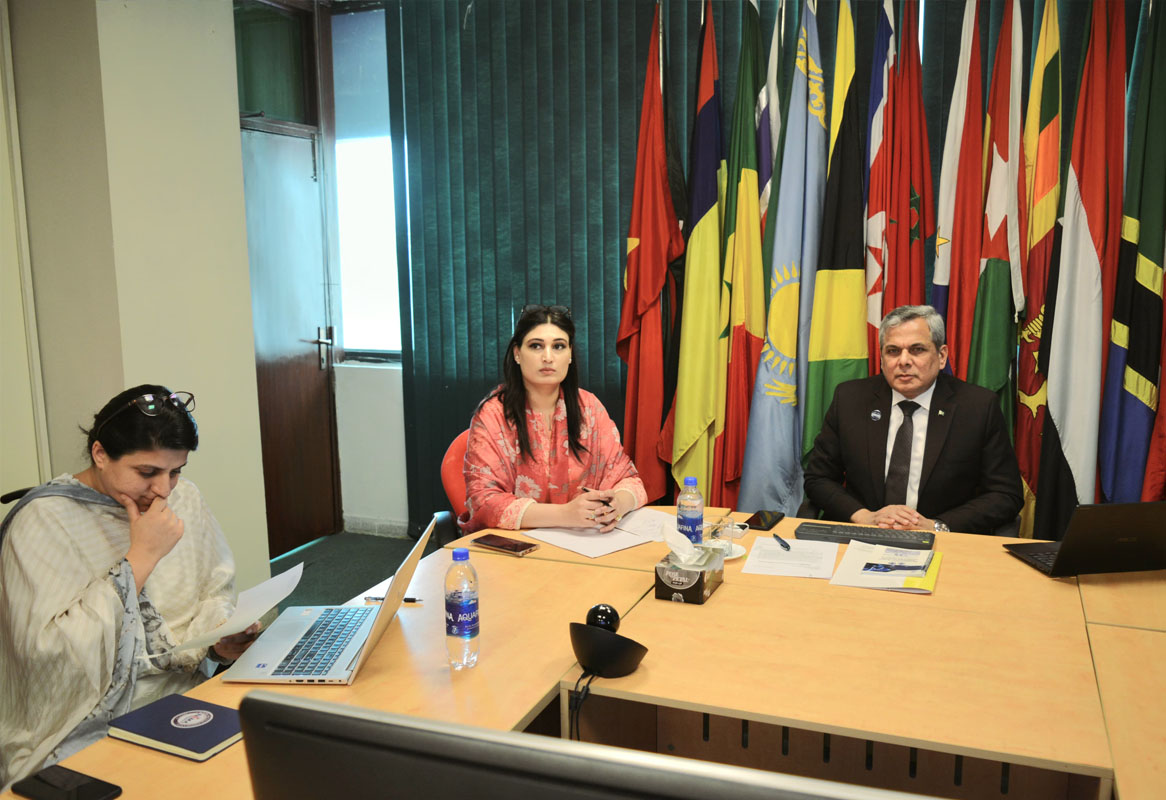- THE COMMISSION
- SECRETARIAT
- CONSULTATIVE COMMITEE
- NETWORK OF CENTRES
- PROGRAMMES
- COMSATS’ Programmes
- COMSATS’ Ongoing Projects
- Skill Development Programme
- International Thematic Research Groups
- Science Diplomacy
- National/International Events
- Scientific Activities Sponsorship
- Scholarships and Fellowships
- Expert Exchange Programme
- Distinguished Professorship Scheme
- COMSATS’ Panel of Experts on ST&I Policy
- Centre for Climate and Sustainability
- COMSATS Joint Centre for Industrial Biotechnology (CCIB)
- COMSATS and Corona
- PUBLICATIONS
- ARCHIVES
- ANNOUNCEMENTS
- NOTICES
Latest S&T Developments from around the world (opinions/ideas)
Scientists from University of Hawai’i at Mānoa, USA found the New geochemical and geochronological evidence which reveals that the Samoa and Rurutu-Arago hotspots are over 100 million years old, helping scientists refine models of Pacific plate motion. This breakthrough allows researchers to directly link the massive Ontong Java Nui Plateau to the Louisville hotspot track without invoking large plume shifts, resolving a long-standing tectonic mystery in the Pacific.
For details click here
UNSW mathematician Prof. Norman Wildberger has developed a revolutionary algebraic method to solve high-degree polynomial equations long thought unsolvable. By rejecting irrational numbers and using a novel number array called the “Geode,” this breakthrough offers a general solution framework based on combinatorics and logic—potentially transforming both theoretical math and practical computing.
For details click here
A study conducted by scientists of University of Austin, using millions of bird sightings found that migration and central positioning in climate space help species occupy broader climate niches. Traits like larger brains, smaller bodies, and broader diets indirectly contribute to narrower niches by enabling access to widespread but climatically similar habitats. These results reveal that both mobility and ecological flexibility shape how bird species evolve their climate tolerances.
For full article click here.
Researchers of National Institute of Standards and Technology discovered that high-strength aluminum parts made by additive manufacturing naturally form quasicrystals that boost mechanical performance. This breakthrough provides a new pathway to design even stronger, heat-treatable alloys. Their findings could significantly enhance next-generation aerospace and structural components.
For full article click here
Syndesis Health, a partner organization of COMSATS, has inked an MoU with Abu Dhabi Health Data Services (ADHDS) to advance AI-driven genomic analytics, precision medicine, and drug discovery. This synergy will leverage Syndesis Health’s database of phenotype data of 70 million patients and ADHDS’s digital health infrastructure to accelerate pharmaceutical research and improve clinical decision-making powered by AI-driven pharmacogenomics, predictive healthcare models, and commercializing phenotype data for global biotech and academic research.
For further details click here
Scientists from KAUST and NUS have developed game-changing brain-like computing in ordinary silicon transistors, turning everyday chips into ultra-efficient AI hardware. This single transistor now able to mimic neurons and synapses—handling learning and memory with 14 programmable states while using 1000x less energy than traditional designs.
For further detail read the full article.
A team of researchers led by Ryan M. Lau (NSF NOIRLab) and Kishalay De (MIT) used JWST to study ZTF SLRN-2020, a star that consumed its planet. The study reveals warm dust, CO gas, and potential phosphine emissions, revealing that the host star is a young K-type star—ruling out stellar evolution as the cause. The phenomenon is likely driven by tidal orbital decay, offering new clues about how planetary systems meet their end and enriching our understanding of star-planet interactions.
For further details click here
Dr. Maria Spies with her team at the University of Iowa discovered a unique double-ring structure of the DNA repair protein RAD52, which protects stalled DNA replication forks in cancer cells with DNA repair deficiencies. This breakthrough reveals new druggable targets on RAD52, potentially enabling the development of selective cancer therapies for hard-to-treat tumors like BRCA-deficient breast and ovarian cancers.
For further details click here
Victor Barizien and Jean-Daniel Bancal from the Institute of Theoretical Physics (IPhT) have solved a 40-year-old mystery about the extent of quantum entanglement in Bell test experiments. Their breakthrough, published in Nature Physics, provides the first complete and explicit description of quantum statistics in these tests—advancing both our fundamental understanding of quantum mechanics and the validation methods for emerging quantum technologies.
For further details click here
A study published in Ecology and Evolution on April 7, 2025, reveals that in Madagascar’s northeastern regions, black rats (Rattus rattus) are the exclusive carriers of a hantavirus strain, with infections prevalent in agricultural areas but absent in rainforest habitats, highlighting how human land use influences disease risk. The full study is accessible at Ecology and Evolution
China is revolutionizing healthcare with its cutting-edge automated systems that has enabled delivery of life-saving medicines with unmatched precision, using AI, ensuring speed, accuracy, and efficiency 24/7.
This breakthrough is just one example of how China is leading in science and technology, transforming healthcare with innovation.
🔗 Details in the video! click here
Chinese researchers have set a record in quantum communication by sending a ‘secret encryption key’ nearly 13,000 km from China to South Africa using a lightweight micro-nano satellite, Jinan-1. The advancement in Quantum Key Distribution (QKD) enables ultra-secure communication, as the system detects any infiltration by measuring disturbances in quantum states.
The satellite, which is 45 times cheaper and 10 times smaller than its predecessor, successfully transmitted encrypted images between the two locations. This breakthrough brings the world closer to a global quantum network, with plans for commercial applications in 2026 through a partnership with China Telecom.
For more information click here
Researchers of the Max Planck Institute for Intelligent Systems developed magnetic coated microalgae with enhanced ability for drug delivery in biological systems. These magnetized algae could navigate tight spaces and propel through viscous fluids, making them agile.
Despite the coating, the algae maintained high-speed mobility, reaching 115 micrometers per second (12 body lengths per second), significantly faster than human swimmers in relative terms. Their efficient movement and magnetization is breakthrough in medical sciences.
For more information click here
In a pioneering clinical study, Japanese scientists at Tokyo’s Keio University have utilized induced pluripotent stem (iPS) cells to address spinal cord injuries, marking a significant advancement in regenerative medicine. By reprogramming mature cells to a juvenile state, these iPS cells were differentiated into neural stem cells and implanted into patients with severe spinal cord injuries. Among the four participants, two exhibited notable improvements in motor function without experiencing serious adverse effects over a year-long observation period. This research underscores the transformative potential of stem cell therapies in restoring neurological function and offers a promising avenue for patients affected by paralysis due to spinal cord damage.
More details are accessible at: iPS Cell Transplantation Helps 2 Paralyzed Patients Improve Motor Functions; Research Team Says Cells ‘Repaired Damage’ – The Japan News.
COMSATS welcomes the following news of regional initiative in which People’s Republic of China, the founding Member State of COMSATS, joined hands with Japan and Republic of Korea to ensure peace for sustainable development. The Korean Peninsula is a strategic part of the Asian continent, which is home to 13 Member States of COMSATS besides other developing countries.
For further information, click here
NASA’s James Webb Space Telescope has captured direct images of multiple gas giant planets within an iconic planetary system. HR 8799, a young system 130 light-years away, has long been a key target for planet formation studies
For further information, click here
In a significant technological leap, China’s Chang Guang Satellite Technology Co. has set a new record for satellite data transmission, achieving a groundbreaking rate of 100 gigabits per second (Gbps) using laser technology. This milestone, accomplished in late December, allows the equivalent of 100 full-length movies to be transmitted from space to Earth in just one second. The breakthrough addresses a critical bottleneck in global satellite communications, where current methods struggle to handle the vast amounts of data generated by advanced sensors and cameras in space. Chang Guang, which operates a constellation of 117 remote-sensing satellites, plans to equip its entire fleet with this laser technology, aiming to network 300 satellites by 2027. This advancement promises to enhance applications in Earth observation, navigation, and the development of 6G mobile communication.
The achievement positions China ahead of competitors like Elon Musk’s Starlink, which has yet to implement laser-based satellite-to-ground communication on a large scale. Chang Guang’s innovation not only improves data transmission reliability and cost-efficiency but also opens doors for civilian and military applications, including disaster monitoring, environmental protection, and national defense. While other entities, such as NASA and MIT, have achieved higher speeds in controlled tests, Chang Guang is the first commercial company to deploy such high-speed laser transmission operationally. This development underscores China’s growing prowess in the global space race, marking a strategic advantage in both civilian infrastructure and military capabilities.
Scientists have managed to repeatedly produce nuclear fusion ignition for the first time, marking a major milestone towards achieving near-limitless clean energy at scale.
A team at the Lawrence Livermore National Laboratory (LLNL) in the US achieved fusion ignition last December, producing a net energy gain from a fusion reaction for the first ever time.
The feat was hailed as a “moment of history” by physicists, which LLNL scientists have now repeated a further three times.
For further information, click here
WASHINGTON: A tiny Nasa satellite was launched on Saturday from New Zealand with the mission of improving climate change prediction by measuring heat escaping from Earth’s poles for the first time.
“This new information — and we’ve never had it before — will improve our ability to model what’s happening in the poles, what’s happening in climate,” Nasa’s earth sciences research director Karen St. Germain told a recent news conference.
The satellite, which is the size of a shoe box, was launched by an Electron rocket, built by a company called Rocket Lab, which lifted off from Mahia in the north of New Zealand. The overall mission is called PREFIRE.
For further information, click here
JIUQUAN SATELLITE LAUNCH CENTER, CHINA — China launched a three-member crew to its orbiting space station on Thursday as part of its ambitious program that aims to put astronauts on the moon by 2030. The Shenzhou-18 spacecraft lifted off from the Jiuquan Satellite Launch Center on the edge of the Gobi Desert in northwestern China atop a Long March 2-F rocket at 8:59 p.m. (1259 GMT).
The spacecraft’s three-member crew will relieve the Shenzhou-17 team, which has been staffing China’s Tiangong space station since last October. The China Manned Space Agency, or CMSA, held a send-off ceremony — complete with flag-waving children and patriotic music — for the Shenzhou-18 crew earlier on Thursday, as the three astronauts prepared to enter the spacecraft.
For further information, click here
MIT scientists have introduced a ground-breaking method called BioAutoMATED, aimed at generating artificial intelligence (AI) models tailored for biological research. This innovative approach equips researchers with a powerful tool to enhance their comprehension of biological events and processes, paving the way for accelerated scientific advancements across various fields through the integration of AI capabilities. BioAutoMATED is an automated machine-learning system that simplifies the construction of models for biological datasets, addressing the challenges associated with biological sequences like DNA, RNA, Proteins, and Glycan. The open-source code encourages researchers to collaborate and improve the technology, promoting its accessibility to all biological researchers.
For further information, click here
The integration of artificial intelligence (AI) and biotechnology, whilst in its infancy, presents significant opportunities and risks, and proactive policy is needed to manage these emerging technologies. Whilst AI continues to have significant and broad impact, its relevance and complexity magnify when integrated with other emerging technologies. The confluence of Machine Learning (ML), a subset of AI, with gene editing (GE) in particular can foster substantial benefits as well as daunting risks that range from ethics to national security. These complex technologies have implications for multiple sectors, ranging from agriculture and medicine to economic competition and national security. Consideration of technology advancements and policies in different geographic regions, and involvement of multiple organisations further confound this complexity.
For further information, click here
A recent study reveals that the excessive extraction of groundwater for drinking and irrigation has led to a 1.57-inch (3.98-centimeter) shift in the Earth’s axis. Although this shift does not directly impact climate change, the study suggests that the overuse of groundwater, driven by climate change, may have indirectly contributed to the shift. The research, conducted by academics from various countries, examined data from climate models focusing on polar movements between 1993 and 2010. They found that 2.15 giga-tons of water, equivalent to a 6.24-millimeter rise in sea levels, were extracted from underground, leading to the observed shift. The study underscores the connection between water distribution on Earth and the melting of polar and mountain glaciers, as well as groundwater depletion. This movement resulted in a total impact of 30.89 inches (78.46 cm) over the study period, corresponding to an annual shift of 1.71 inches (4.34 cm) towards the 64.16 east longitude.
For further information, click here
Researchers at PSI and the University of Barcelona have successfully explained the peculiar behavior of microgels through neutron beam measurements. The researchers have confirmed their 2016 hypothesis, which attributes this phenomenon to the arrangement of positively charged counterions forming a cloud around the negatively charged microgel. This breakthrough understanding of microgel behavior opens up new opportunities for applications in materials and pharmaceutical research. Tailored microgels can find use in various industries, including oil, cosmetics, and pharmaceuticals, where they can be employed to adjust viscosity, provide desired consistency in creams, and act as smart carriers for drug delivery.
For further information, click here
Scientists have achieved a groundbreaking feat by genetically engineering female fruit flies to undergo ‘virgin birth’ known as parthenogenesis, where offspring are produced without mating. The study demonstrated that the genetically modified flies reproduced asexually, and their offspring also inherited the trait across generations. The research provides a significant first in the animal kingdom and showcases the potential of inducing parthenogenesis in sexually reproducing species.
For further information, click here





